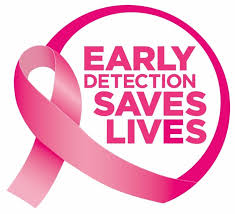Some people with sleep apnea have an increased risk of cancer, and the odds may be higher for women than men, researchers say. With October being Breast Cancer Awareness Month, Alaska Sleep Clinic wants to educate women on the risks associated with untreated sleep apnea and why women are so under-diagnosed.
The Biology of Cancer
“Recent studies have shown that low blood oxygen levels during the night and disrupted sleep, which are both common in [obstructive sleep apnea], may play an important role in the biology of different types of cancers,” said study leader Athanasia Pataka.
“But this area of research is very new, and the effects of gender … have not been studied in detail before,” said Pataka, an assistant professor of respiratory medicine at Aristotle University in Greece.
The researchers examined data from more than 19,000 sleep apnea patients in Europe in order to assess the link between obstructive sleep apnea severity, low blood oxygen blood levels and cancer risk.
In people with the sleep disorder, the airway closes completely or partially many times during sleep, reducing levels of oxygen in the blood. Common symptoms are snoring, disrupted sleep and excessive tiredness.
The study found that people who have more airway closures during sleep and whose blood oxygen saturation levels fall below 90% are diagnosed with cancer more often than people without sleep apnea.
The researchers also found that cancer was more common among women than men, even after factors such as age, body mass index (BMI), smoking, and alcohol consumption were taken into account.
Cancer Study Specifics
Among the patients in the study, 2% had been diagnosed with a serious cancer, including 2.8% of women and 1.7% of men. Those diagnosed with cancer were more likely to be older than 50 and less overweight.
The most common type of cancer among women was breast cancer, while prostate cancer was the most prevalent among men.
The study can’t prove that the sleep disorder causes cancer, only that there’s an association between the two.
Still, the findings suggest that sleep apnea could be an indicator for cancer in women, but more research is needed to confirm that, according to the study authors. The findings appear in the May 20 issue of European Respiratory Journal.
The signs of sleep apnea may be less noticeable in women, the researchers pointed out.
Classic Signs of Sleep Apnea
“The classic symptoms of [sleep apnea] such as sleepiness, snoring and stopping breathing during the nighttime are reported more frequently in men, but other lesser-known symptoms like fatigue, insomnia, depression and morning headaches are more common in women,” Pataka explained in a journal news release.
She suggested that “clinicians should be more careful when evaluating their female patients for possible [sleep apnea].”
Dr. Anita Simonds, vice president of the European Respiratory Society, pointed out that the overall cancer prevalence was low — just 2%.
Therefore, sleep apnea patients should not be alarmed by this research, said Simonds, who was not involved in the study.
Ladies, We Need More Sleep

In a study from the Journal of Women’s Health, hormonal and physical changes from puberty to pregnancy to menopause impacts sleep health. “Sleep disorders such as the restless legs syndrome (RLS), obstructive sleep apnea (OSA) and insomnia are more prevalent in women during these specific time points.
Lack of adequate sleep or the presence of sleep disorders can greatly impact a woman’s daily life, including her societal roles in the work force and as the primary caregiver in the family.”
Another study found that biological sex factors affect the circadian rhythms of men and women. “Men’s clocks tend to run truer to a full 24-hour cycle or longer meaning 
Doctors Under-diagnose Women. Why?
Studies have found that women snored as loudly as men, with a mean maximal snoring intensity of 50 decibels among women and 51.7 decibels among men. About 49% of the women had severe or very severe snoring (329 of 675), but only 40% of the women rated their snoring at this level of severity (269 of 675).
Although no difference in snoring intensity was found between genders, women tend to under-report the fact that they snore and to underestimate the loudness of their snoring.
Snoring is a respiratory sound generated in the upper airway during sleep. The intensity of snoring may vary and often will disturb the bed partner’s sleep. Snoring is a common warning sign for obstructive sleep apnea, a chronic disease that involves the repeated collapse of the upper airway during sleep.
There is a social stigma associated with snoring among women. Therefore, women may not reliably answer questions about snoring, which may contribute to the under-diagnosis of obstructive sleep apnea in women.
Health care providers who are screening women for suspected obstructive sleep apnea should consider other factors in addition to self-reported snoring. For example, women with sleep apnea may be more likely than men to report other symptoms such as daytime fatigue or tiredness.
Alaska Sleep Clinic’s four sleep labs are all accredited with the American Academy of Sleep Medicine. Women are under-diagnosed for sleep apnea and Alaska Sleep Clinic is hoping to change that through education. Click the link below and find out how ASC treats each sleep apnea case on an individual basis.











